Past Events

Proton Therapy Facilities
Proton therapy facilities will be constructed at Mayo Clinic campuses in Arizona and Minnesota. Each facility will have four proton beam treatment rooms equipped with pencil beam scanning and large machines (synchrotrons) for generating the proton beams.
Mayo is investing more than $370 million in the projects from Mayo's capital budget and benefactor support. Mayo's facilities are one of the few new proton therapy projects being financed by a medical center.
The treatment capacity of each four-room facility is expected to be about 138 patients a day, or about 1,240 patients each year.
During the building phase of each project, a total of 500 construction jobs will be created. When fully operational, the proton therapy program will employ more than 250 new staff members, including 22 doctors and 29 physicists.
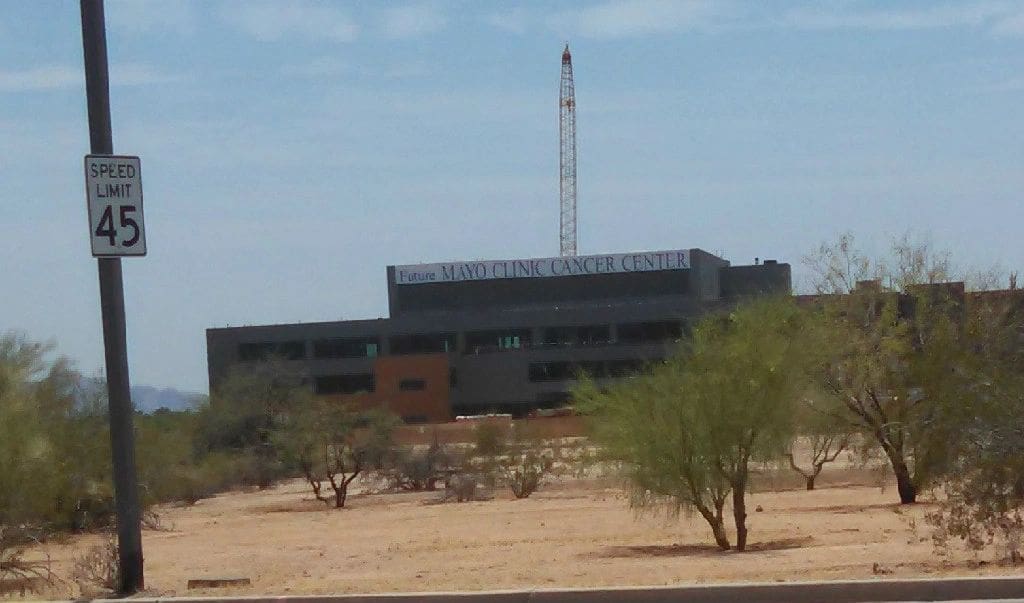
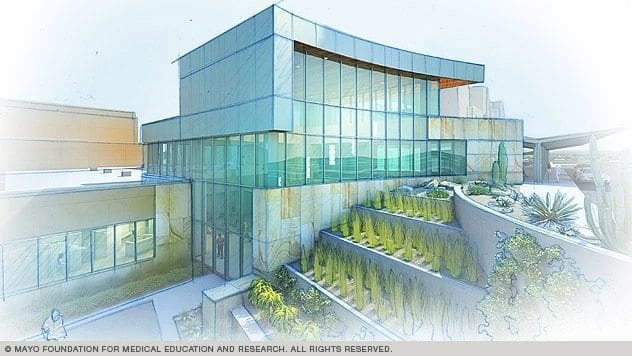
Proton Beam Therapy Program — Arizona Campus
The proton therapy facility will be located east of the Mayo Clinic Specialty Building on the Phoenix campus. The Arizona Proton Beam Therapy Program is expected to employ about 130 staff members, including 13 doctors and nine Ph.D. physicists.
About Mayo Clinic's Program
Mayo Clinic's Proton Beam Therapy Program is a new addition to the Mayo Clinic Cancer Center, the only national cancer center with sites in Arizona, Florida, and Minnesota.
The program differs from most other proton therapy programs in the United States in that it will exclusively feature intensity-modulated proton beam therapy, using pencil beam scanning, an advance over current radiation and proton therapy methods because its beam conforms more closely to the tumor, better sparing surrounding healthy tissue from harm. All eight treatment rooms at Mayo Clinic's two facilities will feature this advanced technology.
The first treatment rooms will be available for patients in Rochester in the summer of 2015 and in Arizona in 2016. All eight treatment rooms will be operational by 2017.
Mayo's Facility
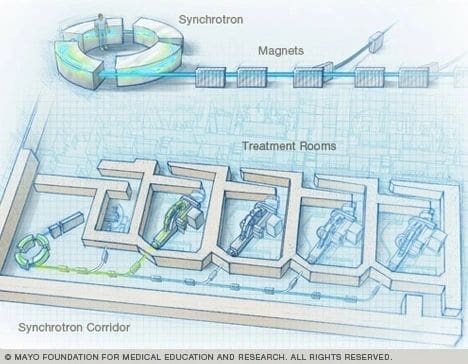
Research
One of Mayo Clinic's priorities is to advance the science of proton therapy, which is still in its infancy. Mayo Clinic researchers at the two proton beam facilities will conduct joint clinical studies as a unified program. Clinical outcomes for all Mayo patients will be entered into one central database to improve care models and services for cancer patients. Mayo also plans to foster collaborative research with other centers worldwide.


Joint Venture for Christmas
The Ramsey Charitable Trust, Inc., has partnered with “Toys For God’s Kids” for the 2013 Christmas Season to bring a little joy to underprivileged children with “something they can call their very own,” says founder Marlin Dorhout, whose organization (ToysForGodsKids) has been building precious wooden cars for deserving children since 2000 with a total distribution of over 500,000.

This year, The Ramsey Charitable Trust, Inc., has found two very worthy groups in need of smiles for the Season. The first is the orphanages of Don McAlvany and his wife, Molly, along with their many other endeavors of The Asian Pacific Children’s Fund under which they “…find well-run, largely unknown Asian children’s homes – homes that are on no one’s radar screen – and to help them to raise funding and bring in resources which they need to survive and prosper. These resources include finances, staffing, food, clothing, medical and dental teams.” Thus far, these include five homes in Indonesia, Asia, and the Philippines.

If you would like to help us in assisting them, please visit our website and contribute whatever amount will make YOU smile for Christmas.
100% of your donation through us goes directly to help these causes.
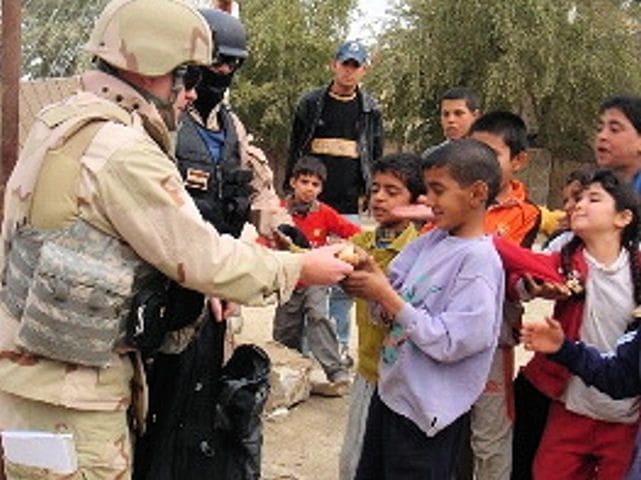

Office of Clinical Partnerships
Mayo Clinic
Arizona State University and Mayo Clinic Scottsdale have joined forces on several new and exciting collaborations in medical research and education. These collaborations include the development of joint education programs involving law, business, and nursing; setting up a joint seed-fund program to pursue cutting-edge research and technology; collaborative research in bioinformatics and bioengineering; and shared office space on each campus. The collaborations draw from the major strengths of each organization - ASU's recognized leadership in basic research and its advanced programs in Biodesign and Biotechnology with the Biodesign Institute, and Mayo's extensive clinical experience, medical education programs and its vertical integration of research spanning basic science, laboratory-based clinical investigation, clinical trials, and population sciences.
Some specific provisions of the agreement include (1) Seed funds to support the interdisciplinary and translational research projects that are collaborative efforts between ASU and Mayo Clinic scientists. ASU and Mayo will each contribute an equal amount of money to the fund. (2) Joint education programs. (3) Shared faculty and appointments for Mayo Clinic and ASU faculty at both institutions, and (4) Shared graduate students and involvement of Mayo faculty in ASU graduate programs.
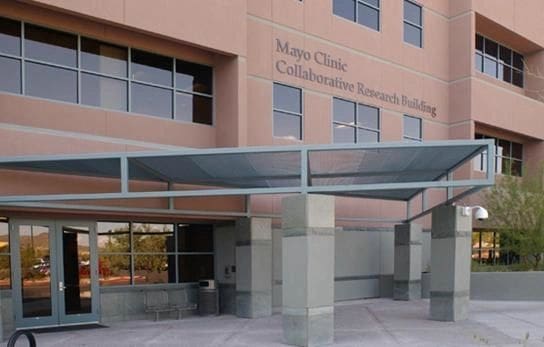
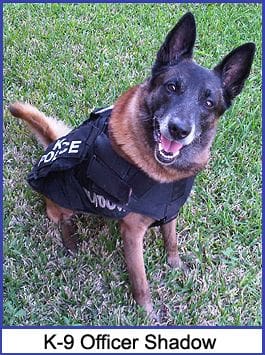
K9 Protector Ensures Police Dogs Get Body Armor
By Jeff Proctor
Albuquerque Journal
ALBUQUERQUE, N.M. — Her most visible project is Vest 'N Police Dog Protection, which, since the spring of 2002, has put protective body armor on nearly 600 police dogs in 41 states.
Jean runs the operation as a one-woman band out of her home in Socorro. The business depends largely on donations, although Jean has been trying for three years to get a bill passed at the Legislature that would change the purpose of the state's law enforcement protection fund to include protective equipment for dogs.
Had it not been for Max and Shadow - and Jean's love for the shepherds - the business would never have come to pass.
The whole thing started when she was living in Douglasville, Ga. It was spring 2002, a few months after the second of the two shepherds had died, and Jean was watching an episode of the popular Fox television show "America's Most Wanted."
"I saw this video of a K-9 officer running after a criminal, and the dog was shot," Jean said in an interview. "The dog just got right back up and knocked the criminal over before his handler arrived. The officer was just yelling: 'You shot my dog! You shot my dog!'
"Of course, by then, I was in tears - my dogs' passing was still very fresh. I just missed them so much; I still do. So I turned to my husband and said: 'These dogs aren't protected at all. I've got to do something.' "
Jean called her local police department and asked whether its two police dogs had protective vests. The answer was no, they're too expensive. So Jean went to work. She gathered donations and hooked up with a local supplier in Georgia who sold her the vests for half the usual price of $1,500 apiece. (The supplier has supported Jean's efforts ever since.) Pretty soon, the police department in Douglasville had two more dogs. Jean got them two more vests.
"From there, it just started to bloom," Jean said. "I was able to vest 64 police dogs before I moved to New Mexico in 2006." In the five years since, with the help of the launch of her website, Jean has continued to put vests on dogs.
The vests themselves are custom-fit after taking seven measurements from the dogs. German shepherds and Belgian Malinoiss are the most common dogs used in police work. Jean has gotten vests for hounds and Labrador retrievers, which are often used in drug detection work.
In addition to saving dogs' lives, the vests are a good economic investment, Jean said.
"It can cost up to $40,000 to train these dogs," she said. "And there's a lot of time invested, too: Officers are with their dogs 24/7. If one of them gets shot or stabbed, all of that is lost. So what's $700 to get one protected?"
Most police dogs, Jean said, serve for about five years - from age 3 to about 8.
Five years is exactly how long the vests last, she said.
Testimonials on her website tell stories of dogs who would not have survived had it not been for the vest.
Most of her focus is on Vest 'N Police Dog Protection, Jean said, which has been hit hard by the recent economic downturn. Still, she said New Mexico has been an ideal place from which to operate the business. "I'm an animal lover, and this is a real animal lover state," Jean said. "I'm retired now, and this is my opportunity to give something back. I do this project in memory of my dogs."
Copyright 2011 Albuquerque Journal
“Moments...An Evening With Bill W.”
Written & directed by Bill McNiff
The Ramsey Charitable Trust was proud to host this 2-act play in Scottsdale on Saturday, April 27th, 2013, at 6 pm.
In a one-man performance based on the life and times of Bill Wilson (1895-1971), the co-founder of Alcoholics Anonymous, Bill McNiff, writer and director who has been appearing as Bill W. for over 20 years, re-creates a 1950 A.A. meeting in Kips Bay, New York, with Wilson being the guest speaker.
The time is important in A.A. history because Dr. Bob, the other co-founder, had died just before. In his monologue, McNiff, as Wilson, relates how he and Dr. Bob, both of them considered hopeless drunks, met in Akron, Ohio, in 1935 and, by sharing their experiences, helped each other stay sober. From these first encounters, A.A. was born. The show has been presented for the past 20 years to tens of thousands throughout the world at National AA conferences and federal, local, and regional Drug and Alcohol Counseling organizations, and a DVD was made of the play, which was supported and endorsed by the Betty Ford Center and Hazelden. His greatest satisfaction, however, was to present the work to four men in a locked cell inside a Canadian prison.
“Moments...an Evening with Bill W.” ends on an emotional note with Wilson recounting Dr. Bob’s last words to him: “Don’t mess this up. Keep it simple.
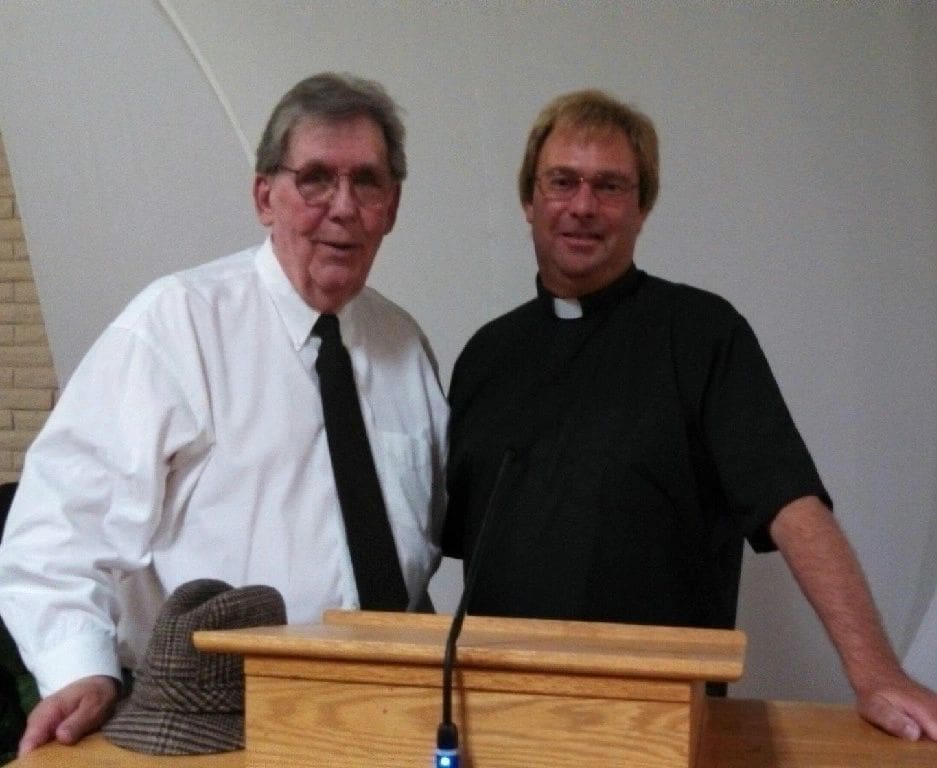
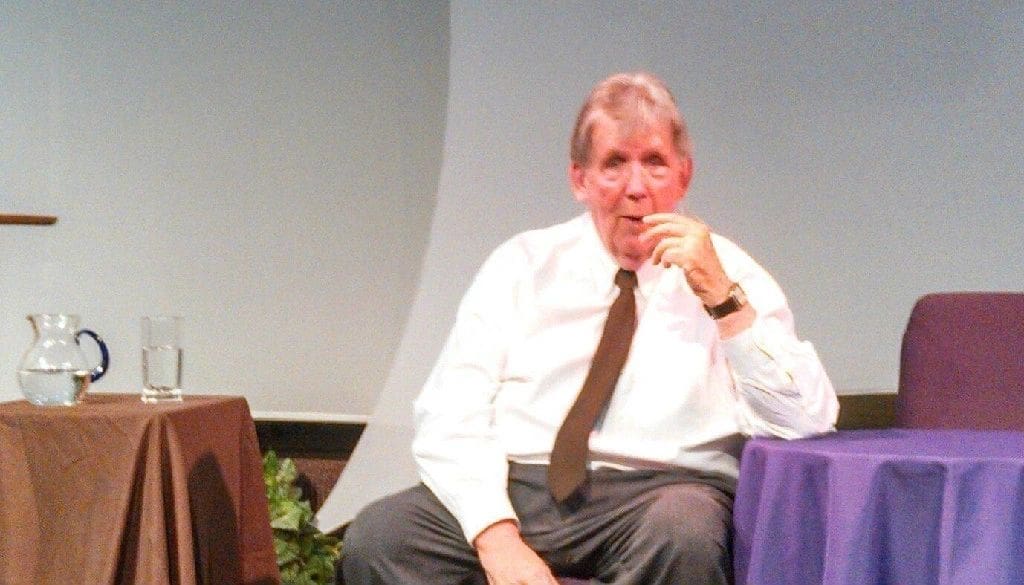
During this visit, Bill also performed in a Milestone Event for the Arizona Department of Corrections before 200 of their DUI inmates at the Phoenix West facility and was welcomed by Mr. Bennie Rollins, Senior Warden, and his gracious staff. The inmates in attendance were given a free copy of the mini edition of AA's "Big Book."
His closing performance was to 55 inpatients at the Valley Hope Rehab Center and welcomed by the director, Alison Dean.
This New performance is newly recorded and available on DVD for $15 at:
Other performances written and directed by Bill McN. are available on CD ($10) or DVD ($15), and proceeds from the sales go to the Valley Hospitals & Institutions group.

"Moments" An Evening with Bill W., a seminal piece on the founding of the A.A. Fellowship.

"Reflections" A Sunday Afternoon with Lois. The story of Al-Anon and the love between Lois and Bill. The play is set at the Wilson's home after the memorial service of William G. Wilson, co-founder of Alcoholics Anonymous.

"Scapedream" Dr. Bob... Pure and Simple. The premise of the play is a dream that occurred minutes before the death of Dr. Robert Holbrook Smith, better known as Dr. Bob, co-founder of Alcoholics Anonymous.
If you have questions or wish to place an order, please contact us at [email protected].

Multidisciplinary Simulation Center
About
The Mayo Clinic Multidisciplinary Simulation Center transforms clinical medical education by helping educators develop, implement, and evaluate experiential curricula that advance patient care.
Our simulation center represents a living collaborative between all specialties and health care professions at Mayo Clinic, where the needs of the patient come first. It is through this lens — to best serve our patients — that our simulation center works to fully realize the benefits of simulation-based education, practice, and research opportunities.
Medical simulation has important lessons and applications for all involved in the risk-laden environment of health care. It provides the ideal environment for teaching healthcare teams how to care for patients. By being allowed to make mistakes, learners can see the effects of those mistakes without harming patients. Simulation makes the learning environment come alive.
Medical centers of excellence must rise to the challenges of both demonstrated competence and scholarly analysis of efficacy via scientific methods, including the use of simulation in medical education.
Mayo Clinic has applied its renowned collaborative practice model to explore and advance simulation education across specialties and professional roles to better educate practitioners.
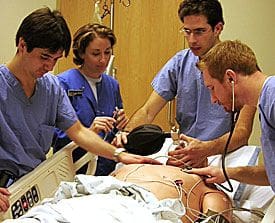
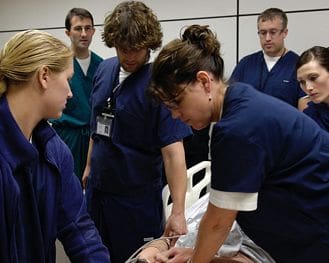
What is Simulation?
Emerging medical simulation technologies provide training in a risk-free, supportive environment where the complex nuances of ideal patient care can be identified, recreated, practiced, and tested among learners to ensure the highest levels of competency.
Simulation technologies can create common and unique crisis scenarios. Chaos can be created on demand. Monitors show physiologic changes just as they would occur in real patients.
Simulation training offers unique and powerful learning opportunities in key competencies, including communication, teamwork, emergent conditions, and leadership, as well as in tasks that require well-practiced manual skills, such as diagnostics and surgical procedures.
Simulation-based medical education provides a controlled or simulated environment to imitate a real-life patient care setting. Through simulation, learners can practice and master skills without putting patients at risk.
Simulation technology encompasses equipment such as computer software and other devices that allow learners to practice specific diagnostic and surgical techniques, and includes three primary types of simulation in realistic patient care settings:
- Actors who portray standardized patients
- Full-sized patient manikins
- Task trainers
For example, simulation allows learners to practice administering anesthesia to life-sized patient manikins that physiologically respond to treatment just as a real-life patient would. And they can do so in controlled learning environments that mimic real-life patient care settings, such as critical care, surgical, or resuscitation emergencies.